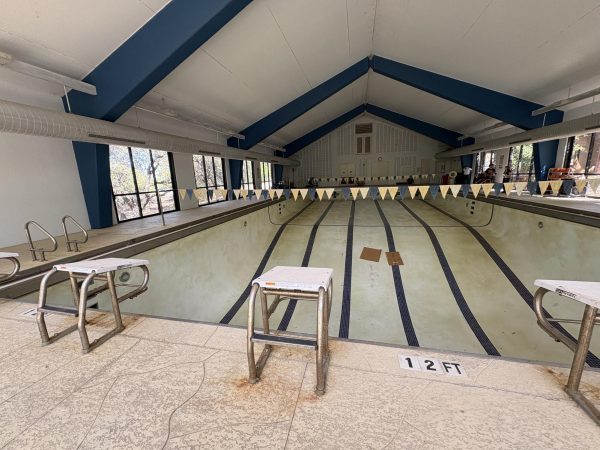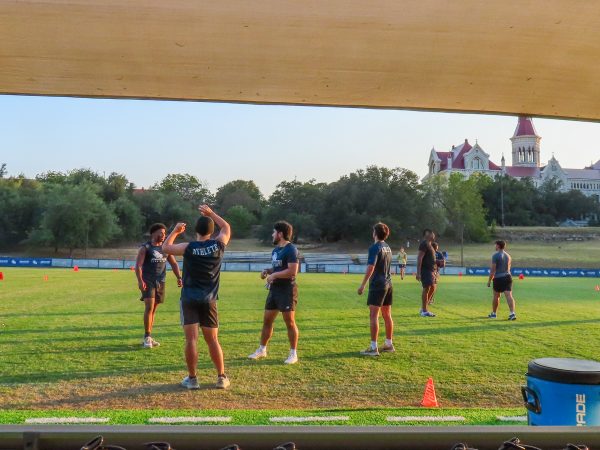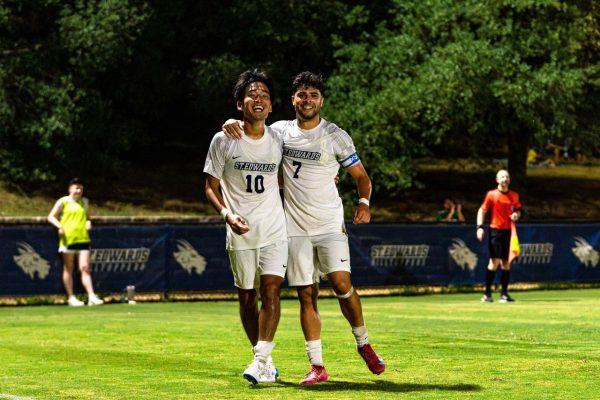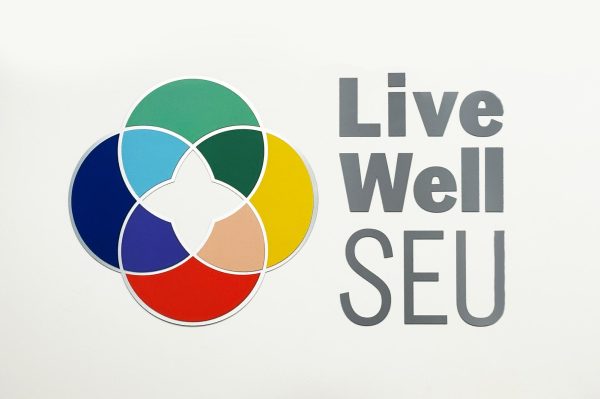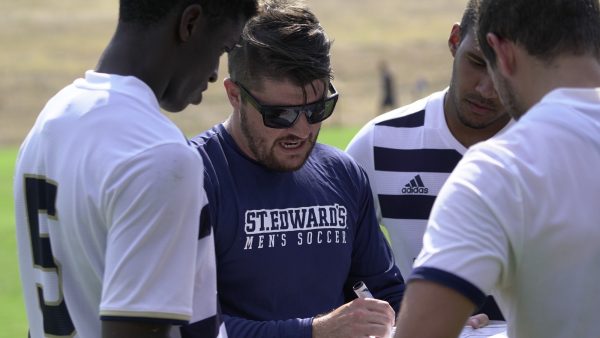Campus Recreation’s first year becomes major success
St. Edward’s University isn’t a sports campus? Please.
After the first year of Campus Recreation, a new division of the Athletics Department, it has become clear that there is a new game in town. Despite the continual successes of the softball team, the golf teams, the tennis teams, the volleyball team, the women’s soccer team, and the baseball team, most students just aren’t that interested in the ups and downs of the Hilltoppers.
No program in recent memory has had as much visible success in its infancy as Campus Recreation — not Living Learning Communities, Hilltop Mentors, or even Trivia Tuesdays at the Huddle. The new intramural field outside of Teresa Hall is constantly filled with students throwing Frisbees, running around with lacrosse sticks, or jumping into a scrum. The RCC is constantly filled with activities for students. Off campus, there might even be a St. Edward’s club ice hockey team next year. Since August, the amount of club teams has increased from four to 17 teams.
Oh, and by the way, there is an average of 22 students per fitness class. The opportunities, which were rather limited in prior years, seem endless now.
Although the clubs are formed at the initiative of students, Andy Lemons, the Campus Recreation director, deserves much of the credit. Out of the gate and before the academic year had even begun, Lemons was actively trying to get students to be, well, active. He went to the August training for resident assistants, he sent a slew of e-mails to the whole student body, and he threw a party on the intramural field.
Lemons said that he wasn’t sure what would be successful and what wouldn’t. But apparently nobody had told him that St. Edward’s isn’t a sports campus like that school across the river.
It didn’t matter. The efforts have paid off. For the first time, it seems like that Recreation and Convocation Center is actually being used for recreation. Students have found creative ways to exercise and compete, whether through swim lessons, yoga, or boot camp-style fitness classes.
The club teams have to be pleased as well. Sophomore Phil Oates, for instance, has helped put together a group of about 30 students who play Ultimate Frisbee regularly. He even has incoming freshman contacting him about the club.
“Obviously, I’m a fan of campus recreation because it existing has allowed me, with another student, to start the Frisbee club on campus,” Oates said. “The process of creating the group was a lot easier than expected, which was beneficial … Campus Rec was like, ‘Cool, you want to play Frisbee? Let’s make it happen.'”
Oates pointed out that students have become fans and are actively supporting club teams like the Rugby team, which went from relative obscurity to winning a state championship this year.
The support helps. Those groups never really belonged under the constant supervision of Student Life along with the College Democrats or the Student Government Association or the Hispanic Business Students Organization or the 100-plus student organizations on campus. Campus Recreation has given the sports teams a home — one with resources and a common commitment to their goals.
“They’ve got plenty of student orgs,” Lemons said of Student Life. “Club sports need a little bit more day-to-day interaction.”
Still, Lemons, a one-man-show for now, continues to tinker with the programs and see just what he can do for students. With a background in intramural sports, Lemons said he was surprised by the success of club sports and fitness programs. But, that comes with the territory.
“If I had my druthers, I would have 50 flag football teams and have everyone play football,” he said, adding that his job is to maximizing success of motivated students.
Sure, Campus Recreation isn’t perfect, but it is alive and well, which is a minor miracle in itself.
“I think that our biggest success is that we have a name here on campus,” Lemons said. “Students know they have a resource here.”
That they do. Campus Recreation: 1, Non-sports campus: 0.

